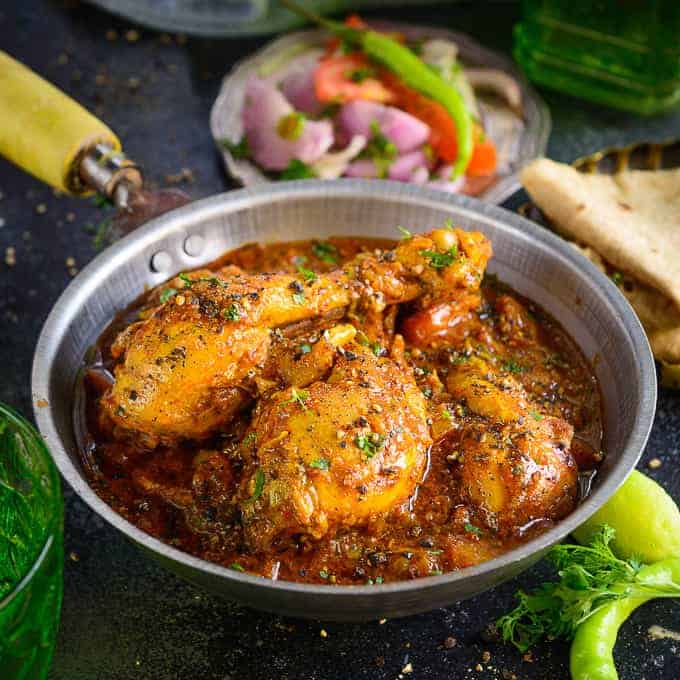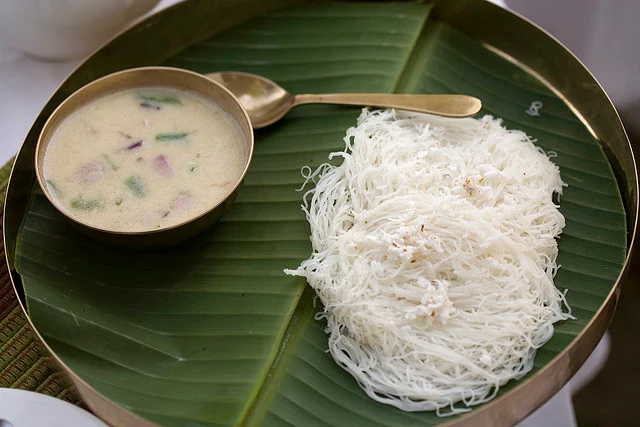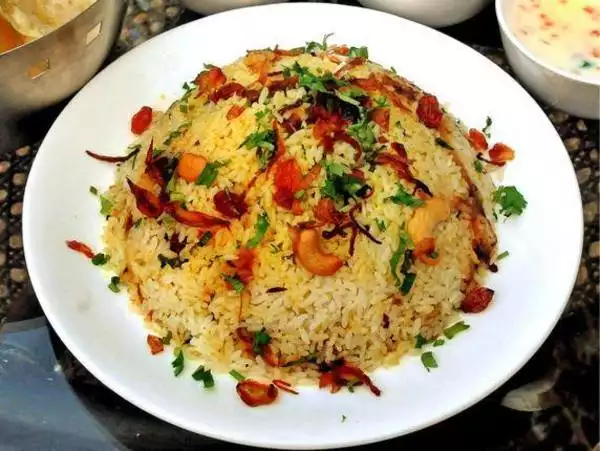Historical and cultural influences
In addition to historical diversity, cultural influences, particularly the large introduction of Muslims and Christians, have also added unique dishes and styles to Kerala cuisine, especially non-vegetarian dishes. Most modern-day Hindus do not observe religious dietary restrictions, except a few belonging to specific castes that do not consume beef or pork.
Most Muslims do not eat pork and other food forbidden by Islamic law. Alcohol is available in Kerala in many hotels and over a thousand bars and liquor stores. One of the traditional Kerala dishes is vegetarian and is called the Kerala sadya. A full-course sadya, consists of rice with about 20 different accompaniments and desserts, and is the ceremonial meal of Kerala eaten usually on celebratory occasions including weddings, Onam and Vishu. It is served on a plantain leaf.


